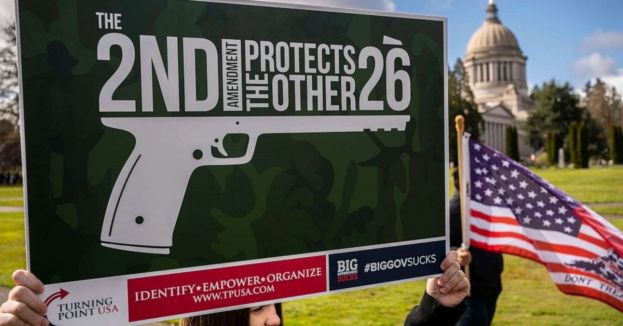On its face, this law obviously breaks the spirit of the Second Amendment. However, conservatives fighting to overturn it, find themselves in the embarrassing position of fighting against long-standing conservative principles like constitutional federalism and state sovereignty. Essentially, in this case, the argument for gun rights relies on a century of progressive precedent remembered as the “incorporation doctrine.”
Activist courts have used this legal theory to impose left-wing policies top-down onto the states. Conservatives are correct to insist on a consistent pattern; if the Constitution means no school prayer in Kansas, then it additionally means the right to carry a gun in New York City.
TECH GIANTS JOIN FORCES WITH DHS IN HERCULEAN BATTLE AGAINST CHILD EXPLOITATION![]()
In a brief to the court, J. Michael Luttig, a former judge of the 4th U.S. Circuit Court of Appeals, claims against overturning New York’s law by pointing to the founders’ view that states were free to regulate the carrying of firearms within their own jurisdictions. His assessment is historically correct, though the continued insistence on this forms a double standard under the law.
HORRIFIC FOOTAGE EMERGES: FRANTIC RESCUE EFFORTS AFTER RUSSIAN MISSILES HIT UKRAINIAN CITY (WATCH)![]()
The states ratified the Bill of Rights in 1791 to constrain the authority of the federal government, not themselves. The First Amendment, for instance, prevents “Congress” from making any “law respecting an establishment of religion,” though early states set their own policies.
HIGH-STAKES SUMMIT: G7 MULLS SANCTIONS ON IRAN, WHAT SHOULD WE EXPECT?![]()
Under Thomas Jefferson’s lead in 1786, Virginia became the first state in America to separate church and state, though Massachusetts maintained Congregationalism as its state religion for a half-century post-ratification before embracing the wisdom of the Old Dominion. Instead of resting on the top-down imposition of a federal court, religious freedom won the slow battle of decentralized policy-making among the “laboratories of democracy.”
WATCH: NEWT GINGRICH'S APPROACH TO "DEATH TO AMERICA" CHANTS![]()
In 1833, the Supreme Court upheld this principle of federalism in Barron v. Baltimore, finding that states are constrained by their own state constitutions, not the Bill of Rights. In 1925, though, the court instituted the “incorporation doctrine” in a case over free speech (Gitlow v. New York), interpreting the due process clause of the Fourteenth Amendment (adopted after the Civil War) as incorporating the Bill of Rights into the states. In the century since, federal courts have cited this doctrine to override wide-ranging state policies on matters varying from school prayer to gay marriage.








 Discover alternative ideas that will make you think
Discover alternative ideas that will make you think Engage in mind bending debate
Engage in mind bending debate Earn points, rise in rank, have fun
Earn points, rise in rank, have fun


